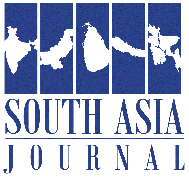
A Kashmiri Muslim woman shops at a jewelry store ahead of the Muslim festival Eid al-Fitr. Indian exports in sectors like gems and jewelry are set to be worst hit by new U.S. tariffs. © AP
MUMBAI — Ongoing bilateral trade talks between India and the U.S. have become crucial to the South Asian nation after it was slapped with a 26% reciprocal tariff on Wednesday.
While India has escaped the kinds of eye-watering rates set to be applied to regional competitors such as Vietnam and Bangladesh, the tariffs, effective in full from next Wednesday, make a bilateral agreement crucial for New Delhi as it looks to cushion the impact on exports to the U.S. worth about $80 billion, economists said.
India’s gross domestic product growth, which is already expected to slow to 6.5% for the fiscal year through March 2025 from 8.2% in the previous fiscal year, could take a further hit of 70 to 90 basis points at the current tariff levels, they estimated, while the potential loss of export revenue could stand at around $30 billion.
“That is a very large impact and not palatable at all,” Dhiraj Nim, India economist at ANZ bank, told Nikkei Asia.
Indian exports in sectors like electronics, gems and jewelry, and automobiles are set to be worst hit by U.S. President Donald Trump’s tariffs. His administration has exempted pharmaceutical exports from the tariffs for now.
The comparatively lower tariffs on Indian exports could be advantageous against Asian peers like China and Vietnam, who have been hit harder, S C Ralhan, president of the Federation of Indian Export Organizations, told local media Thursday.
With those silver linings, Indian equities seemed to weather the tariff news better than their Asian peers, with the benchmark indexes Nifty 50 and Sensex down about 0.2% and 0.27% as of noon. The Indian rupee weakened to 85.78 against the dollar at open, but recovered to 85.64 by midday.
The Nifty Pharma index bucked the wider market and was up over 2% as of midday.
The relatively harsher tariffs announced against other major economies, along with hopes of the bilateral agreement, was holding up sentiment in Indian markets, economists said.
“[The muted fall] is indicating that the markets think that this 26% number will not be sustained, and that this is a bit of a ceiling tariff rate, with negotiations set to bring it down,” Nim added.
A team of U.S. officials visited India last week as part of the trade talks between the two countries, which aims to boost bilateral trade to $500 billion by 2030. The Indian government said in a statement Thursday that discussions were ongoing “for the expeditious conclusion of a mutually beneficial, multi-sectoral Bilateral Trade Agreement.”
Unlike China, Canada and the European Union, India has taken a more accommodative stance to Trump’s admonishments about Washington’s trade deficits — $45 billion in India’s case — and slashed tariffs on large motorcycles, luxury automobiles and bourbon earlier this year to appease the U.S.
It is now reportedly considering lowering tariffs on the import of agricultural products like pulses and soybeans, Bloomberg reported last week, as well as on the import of electric cars, as per a Reuters report — a major pain point for Trump ally and Tesla Chief Executive Elon Musk, who is yet to establish a presence in the world’s third largest automobile market with his electric-vehicle maker.
In a fact sheet accompanying the tariff announcements, the Trump administration took aim at India’s “uniquely burdensome and/or duplicative testing and certification requirements,” saying that removing these barriers would increase U.S. exports by at least $5.3 billion annually.
“India’s goods trade surplus with the US … is far lower than that of China ($320 billion), Mexico ($180 billion), Vietnam ($120 billion), or Germany and Ireland (each at $90 billion). This strengthens India’s case for a negotiated tariff reduction,” Sujan Hajra, chief economist at brokerage Anand Rathi, wrote in a note.
However, economists warned that even with a bilateral trade agreement, India will not be immune to the impact of a potential global trade war which Trump’s “liberation day” announcement threatens to usher in.
“A slowdown in US growth and weak global trade momentum will impact external demand [for India],” Morgan Stanley Research said in a note.
“More importantly, we expect the impact to be more pronounced through the indirect channel of weaker corporate confidence, which will dent the risk appetite and further defer the capex cycle [for the country].”
This could prompt more policy support in India, economists said. The Indian central bank could shift its stance from neutral to accommodative at its next monetary policy announcement on Wednesday, according to economists at Morgan Stanley, while the chance of a 50 basis-point cut in the key policy rate has “significantly increased,” ANZ’s Nim said. Nonetheless, a 25 basis-point cut remains the base case for economists at both.
The article appeared in the asia.nikkei
